There are many things that can cause a flooded basement:a leaky pipe, an overflowing washing machine, or a crack in the wall. Regardless of the cause, you need a way to stop the water and clean up the flood. Fortunately, a simple investment in a few cheap gadgets is all it takes.
We've covered smart home equipment to keep your basement dry, like smart valves. Install a smart valve and prevent basement flooding. Install a smart valve and prevent basement flooding. a single piece of equipment? Of course, I am talking about smart water valves. Read More 6 Smart Home Gadgets You Should Install Before You Leave for Summer Vacation. 6 Smart Home Gadgets You Should Install Before You Leave for Summer Vacation. For fire and flood, protect it against any thief and it will be worth it. Read More
In this article, I'll walk you through installing a sensor that detects when there's a water leak on the floor in your basement, and then a smart switch that will turn off a possible known water source in your basement. You could just as easily program the same switch to activate a water pump to pump out the water.
In this project, the first purchase you need to make is a D-Link Wi-Fi Water Sensor, for about $60 (our D-Link Connected Home Kit review, D-Link Connected Home Kit review). D-Link and the D-Link Connected Home Giveaway Set Review and Giveaway D-Link's Connected Home products feature HD security cameras, a water sensor, and a smart WiFi power switch, but is the vision D-Link smart home ready for your living space?Read More).
D-Link DCH-S160 mydlink Wi-Fi Water Sensor D-Link DCH-S160 mydlink Wi-Fi Water Sensor Buy Now On Amazon $139.95
The second gadget purchased is a WeMo Wi-Fi Smart Plug, for about $40.
WeMo Switch Smart Plug, works with Alexa. WeMo Switch Smart Plug, works with Alexa. Buy now on Amazon
I know what you're thinking. “But what about the annoying hubs and smart home protocols I need to know??”
Not All you need are these two smart devices, both of which are very simple to set up and work directly with your home Wi-Fi network. A special external hub is not required. Easy right?
Here is what the hardware will look like when it arrives. The WeMo Smart Plug is on the left and the D-Link Water Sensor is on the right.
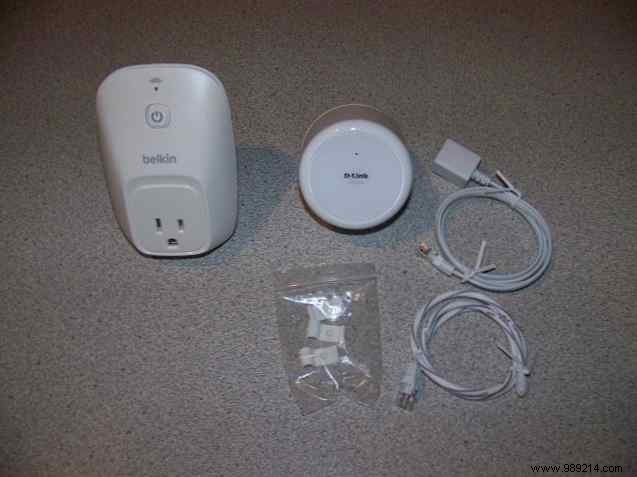
The water sensor is nice because you can plug the unit in somewhere above the floor, and the extended cord allows you to drop the water sensor to the location on the floor you want to monitor.
Now in my specific setup I am monitoring the floor area below my dehumidifier. I Have an Overhead Dehumidifier 4 Gadgets That Can Improve Indoor Air Quality and Keep You Healthy 4 Gadgets That Can Improve Indoor Air Quality and Keep You Healthy Let's take a look at the air quality in your home, then filter and humidify or dehumidify. We'll also look at some awesome gadgets to help with each step. Read More
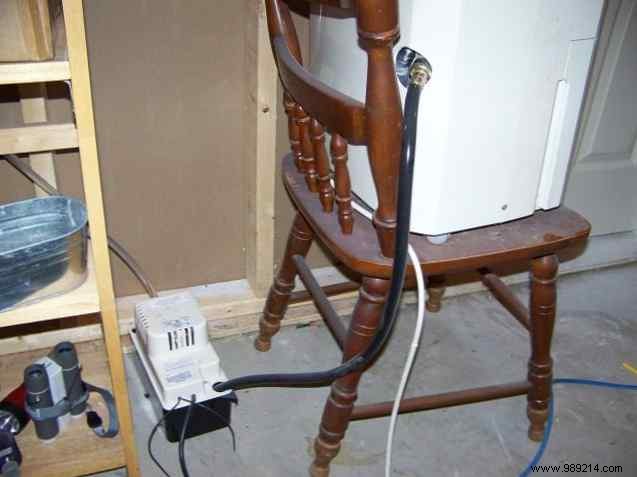
The condensate pump has the black inlet hose with water flowing down from the dehumidifier, and when the water level reaches a certain height, the pump activates and pumps water up the clear tube at the back port. That pipe runs through the wall and eventually enters the same septic pipe inlet that the water from the washing machine drains into.
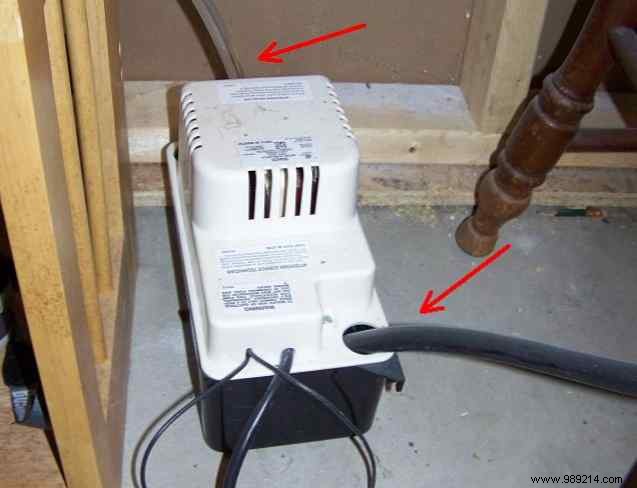
Now, I'm sure you can imagine a lot of scenarios here where water could leak. The hose at the back of the dehumidifier could become loose. The clear hose on the outlet side of the pump could burst or come loose. The float switch could fail and the condensate pump tank could overflow.
All of these things would eventually lead to a growing puddle of water, and if left unchecked, a flooded basement and a lot of damage there. It's not something I want, and an investment of just $100 is a very small price to pay for peace of mind.
The D-Link water sensor control unit is the plug itself. It's pretty big, so if you plan on plugging it into a power strip, do you really need a surge protector? Do you really need a surge protector? A surge protector is not the same as a power strip! Here's how they're different and why you need surge protectors instead, as well as how to choose a good one. Read More
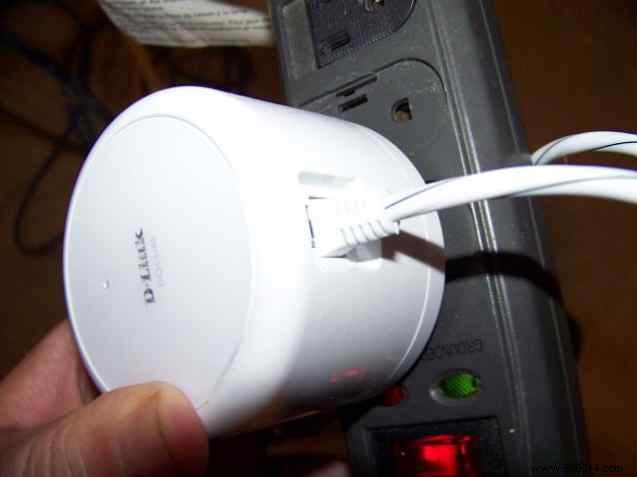
Then plug the sensor extension into the controller body and the actual water sensor cable into that extension cable. This gives you about four feet where you can place the sensor on the basement floor exactly where you know the water will go if there is a leak.
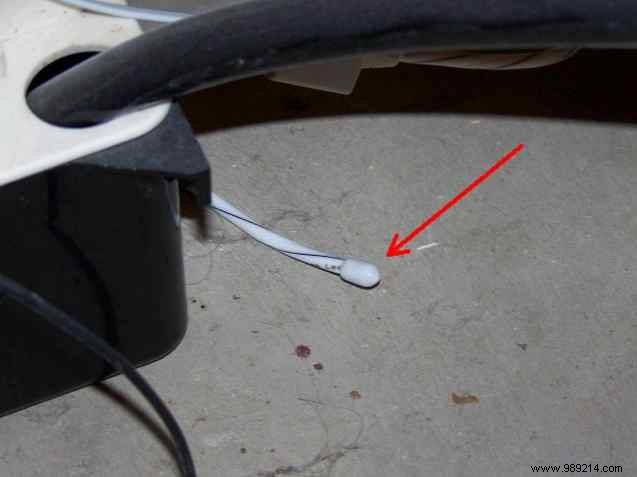
The next unit to connect is the We-Mo plug. This is even easier. Just plug it in and then connect the device you want to control. In this case, I have the D-Link water sensor controller and WeMo switch on the power strip raised about three feet above the floor on a shelf. The dehumidifier is connected to the WeMo switch.
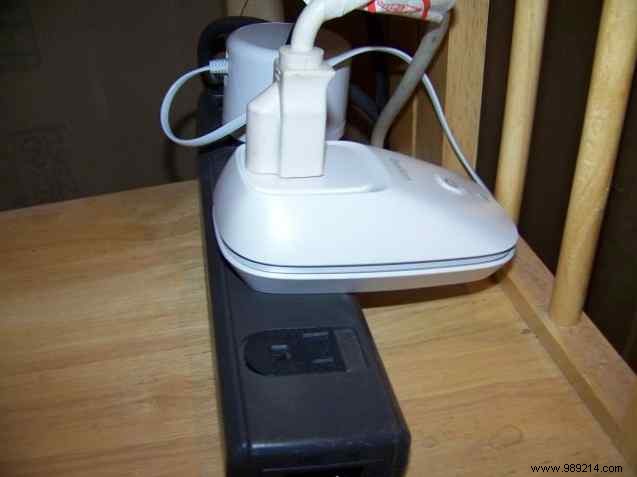
Once you've connected and turned on your smart devices, it's time to connect them to your home network and the Internet.
Both units have a similar setup routine. In the case of the WeMo device, which smart plug is best for you? Which smart plug is the best for you? Even if you're not into the whole smart home automation trend, you should still get some smart plugs. They are one of the easiest smart home products to use. Read More You can find it on iTunes or Google Play..
Both the WeMo and the D-Link come with a built-in wireless network that broadcasts the moment the unit is plugged in. Your mobile device or tablet will see this network, and you will be able to connect to it without any password. For D-Link, you'll need to know the PIN number printed on a small card that comes with the device.
Open the WeMo software and follow the steps to set up your unit. The first step will be to use your phone's Wi-Fi settings to connect to WeMo's wireless network.
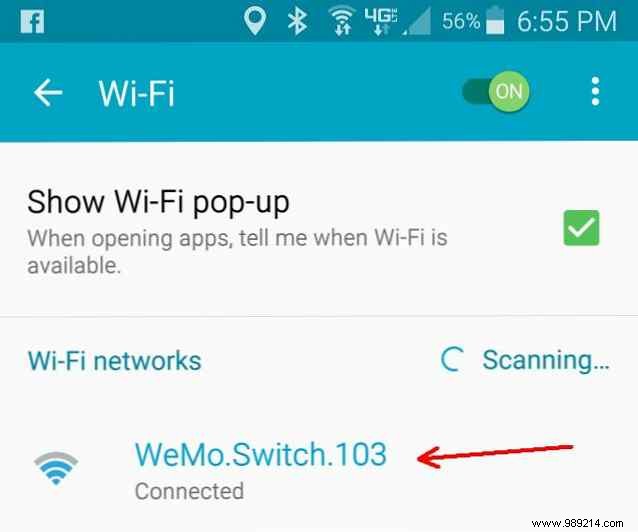
Once you connect to the network, all you have to do is tell the unit what your Wi-Fi network password is. Once you do, the device will connect to your wireless network and you can switch your phone back to your home Wi-Fi connection to continue the setup process.
Rename the unit to whatever you want it to be called on IFTTT later, and add your email address if you'd like to receive notifications from the device. You may also need to create your WeMo online account if you don't already have one. When finished, you will see the unit configured and in the ON state with a green indicator.
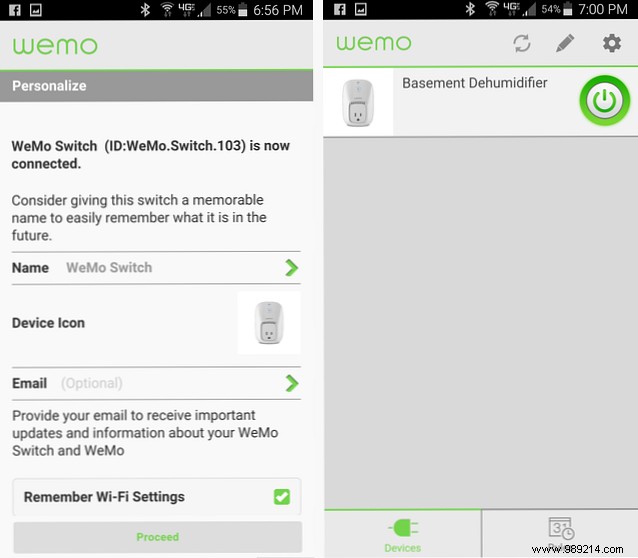
That's the setup and running of WeMo already. Your job is half done!
The D-Link Water Sensor requires the installation of the MyDlink Home app, also available from iTunes or Google Play. Like WeMo, you'll need to create your MyDlink Internet account.
This app will walk you through the same process where you need your phone to first connect to the sensor's own Wi-Fi network, set your home network password, and then turn your phone back on with your home Wi-Fi. to continue. Give the device a nickname and on the final screen you will see the status of the device active and functional.
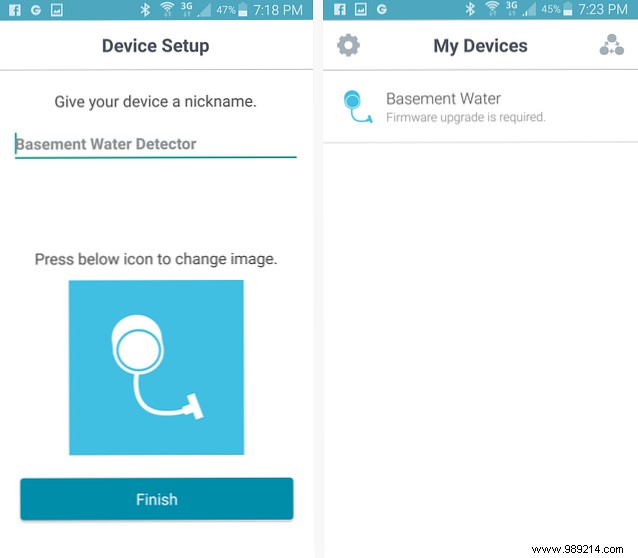
If it says a firmware update is required, I recommend doing it - important security fixes and other bug fixes are likely to be included in firmware updates.
Now that you've got your hardware set up and everything is talking over the internet, you're ready to make the magic happen with an IFTTT recipe. If you don't have an IFTTT account yet, go ahead and set one up, and I highly recommend reading our IFTTT guide. The Ultimate Guide to IFTTT:Use the most powerful tool on the web like a pro. Tool Like a Pro If This Then That, also known as IFTTT, is a free web-based service for your apps and devices to work together. Not sure how to build your applet? Follow along with this guide. Read more to learn how to use it.
The first step will be to configure the water sensor trigger. On IFTTT, just search for “d-link” to find the D-Link water sensor.
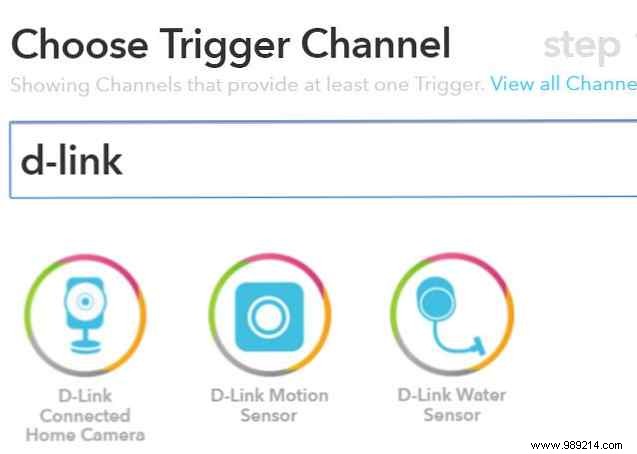
The only trigger available for this is Water detected . Click it.
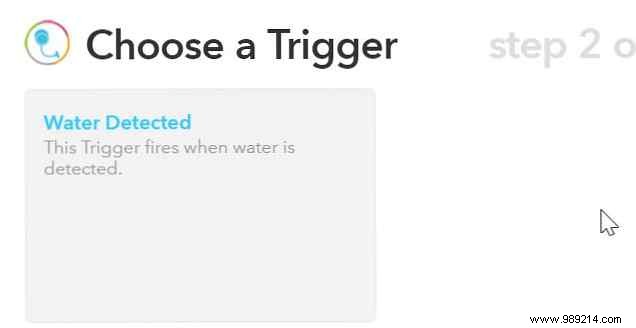
If this is your first time setting up a WeMo device on your IFTTT account, you'll need to use the WeMo app to connect your WeMo devices to the account. You will find the Connect to IFTTT Option in the application settings area.
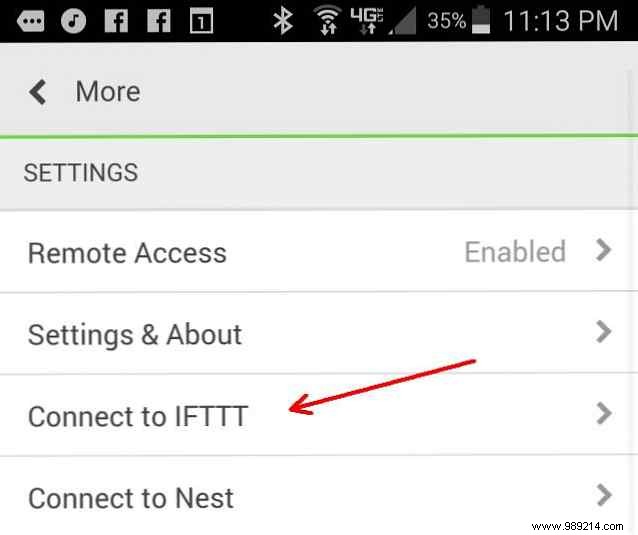
Once you've made that connection, you can search IFTTT for “wemo” to find the WeMo switch.
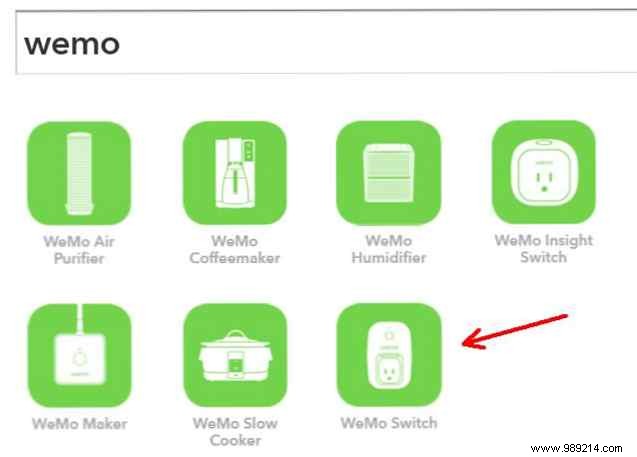
In this example, the action I wanted to take is to turn off the switch if there is a water leak.
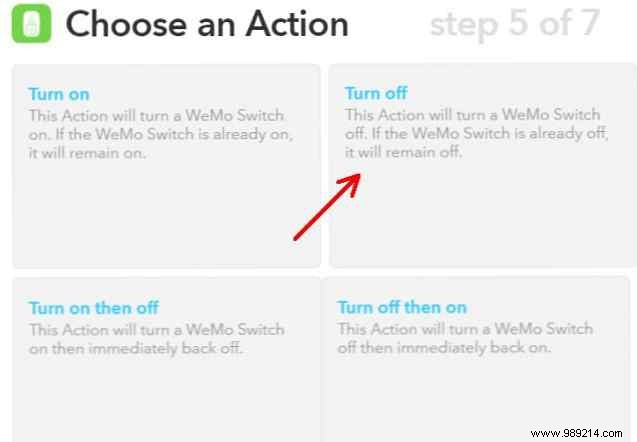
If you have multiple WeMo switches in your home, you'll find a list of them in the next step.
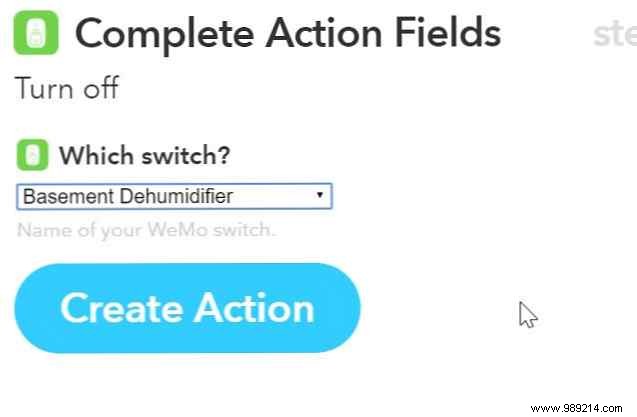
I also suggest clicking to enable “Receive notifications when this recipe runs.”, because if you've had a water leak, even though your smart switch prevented a much worse leak (or flood) from occurring, you still want to know so you can clean up the little mess.
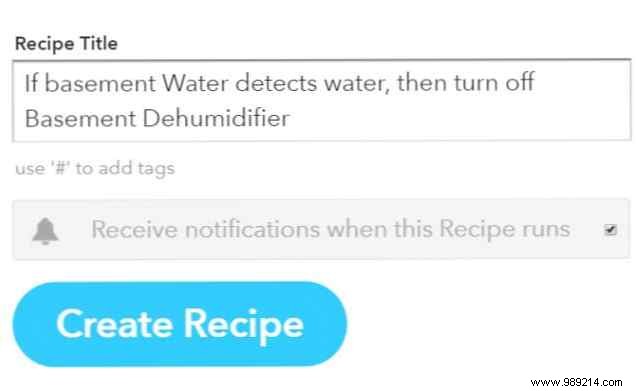
Once you're done creating this recipe, that's all you have to do. Now, for just $100 and very little effort, you have an automated system that will keep your basement dry in the event of a mechanical failure and alert you when a problem occurs.
But what if you don't have a dehumidifier? You can use this same method to detect a water leak under a clothes washer, or even just place the sensor in the lowest corner of your basement where water is most likely to pool first if a flood starts.
In those cases, instead of using a WeMo plug 6 non-Belkin smart plugs. 6 non-Belkin smart plugs. control your water pump.
Wemo Light Switch, WiFi Enabled, Works with Alexa and Google Assistant Wemo Light Switch, WiFi Enabled, Works with Alexa and Google Assistant Buy Now on Amazon $37.99
Then, when the sensor detects a water leak, it can at least turn off the most likely source of water entering the basement. Even if you buy this third breaker in addition to the two devices mentioned earlier in this article, the cost is only $50, making the total cost of keeping your basement dry only $150. It may not work when cut electricity, but for a vast majority of situations leading to flooded basements, it will work just fine. It's a small price to pay for peace of mind.
Have you ever had a basement flood that this setup would have prevented? What other “smart” ideas can you come up with for these sensors in the basement? Share your ideas in the comments section below!